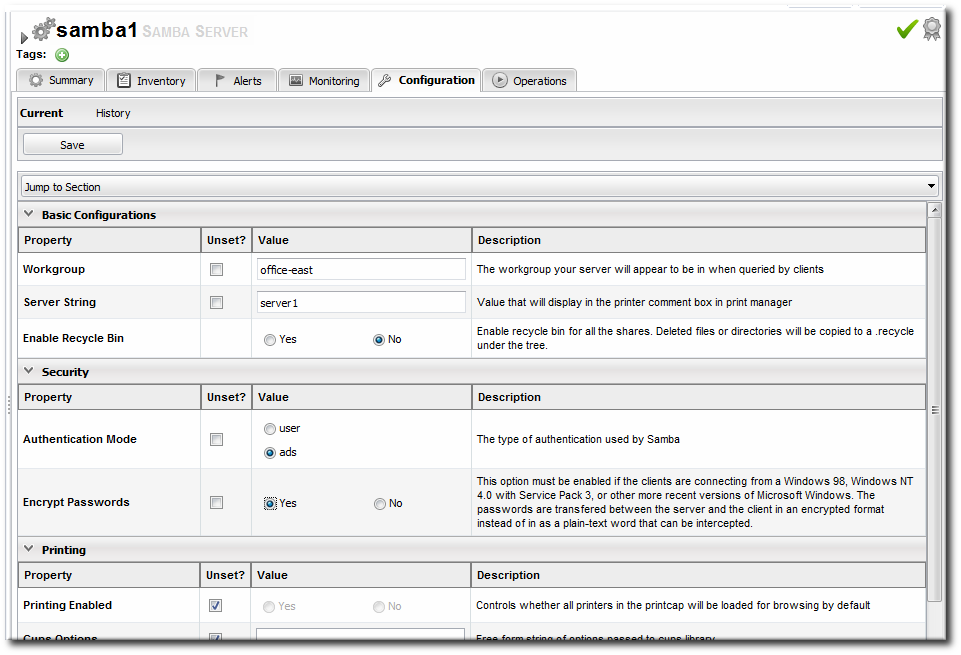Chapter 12. Summary: Using JBoss ON to Make Changes in Resource Configuration
One of the most basic parts of managing your applications, servers, and services is the simple ability to change their configuration.
JBoss Operations Network allows you to view the current configuration for many resource types directly in the JBoss ON UI, without having to access the platform's filesystem directly. Even more, JBoss ON allows you to edit the configuration directly for a single resource or for an entire group of compatible resources.
JBoss ON has three key ways that administrators can manage resource configuration:
- Directly edit resource configuration. JBoss ON can edit the configuration files of a variety of different managed resources through the JBoss ON UI.
- Audit and revert resource configuration changes. For the specific configuration files that JBoss ON manages for supported resources, you can view individual changes to the configuration properties and revert them to any previous version.
- Define and monitor configuration drift. System configuration is a much more holistic entity than specific configuration properties in specific configuration files. Multiple files for an application or even an entire platform work together to create an optimum configuration. Drift is the (natural and inevitable) deviation from that optimal configuration. Drift management allows you to define what the baseline, desired configuration is and then tracks all changes from that baseline.
This section has a very general overview of these three ways of managing resource configuration. More detailed descriptions and procedures are in the subsequent sections.
12.1. Easy, Structured Configuration
Copy linkLink copied to clipboard!
Basic configuration files use simple key-value pairs to define information.
key1 = value1 key2 value2
key1 = value1
key2 value2
These are simple properties, representing strings, numbers, or booleans — any type of information where there is one value per key.
JBoss ON also supports resource configuration using complex properties, which may be a list of values or a map of values (essentially a table of lists).
JBoss ON parses the configuration files — both simple properties and complex properties — and then renders a structured, easy-to-follow form in the JBoss ON GUI. Simple properties are displayed with fields or radio buttons as appropriate, while complex properties are displayed with menus or other selection options.
Figure 12.1. Configuration Form for a Samba Server
The structured configuration form makes it easy for you to view the current configuration quickly.
The structured form also makes it possible for JBoss ON to validate that the configuration properties have valid formats before saving changes.
Note
JBoss ON only validates that the given value matches the required format for that property. It does not validate that the value given is reasonable or allowed for that resource property.
Performing configuration changes in JBoss ON has major benefits for IT administrators:
- There is instant validation on the format of properties that are set through the UI.
- Audit trails for all configuration changes can be viewed in the resource history for both external and JBoss ON-initiated configuration changes.
- Configuration changes can be reverted to a previous stable state if an error occurs.
- Configuration changes can be made to groups of resource of the same type, so multiple resources (even on different machines) can be changed simultaneously.
- Alerts can be used in conjunction with configuration changes, either simply to send automatic announcements of any configuration changes or to initiate operations or scripts on related resources as configuration changes are made.
- Access control rules are in effect for configuration changes, so JBoss ON users can be prevented from viewing or initiating changes on certain resources.
